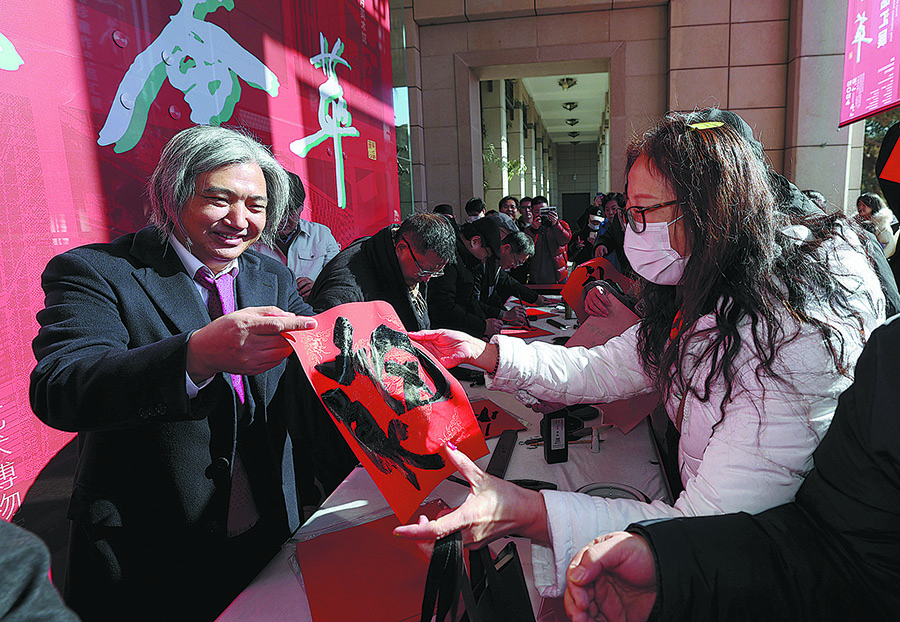Director advocates greater public art education


Wu describes calligraphy as an art form that is easy for ordinary people to learn and practice regularly, adding that these days "one can begin using a pen but with a fine brush tip, which is affordable and convenient to carry, and then progress to holding the formal Chinese brush".
"See, appreciate and practice, that will help one better understand the cultural accumulations and artistry of every Chinese character, and make people feel even more proud of their country and culture," he says.
His efforts are gaining positive feedback from visitors to the national art museum. For example, several well-curated calligraphy exhibitions held at the museum last year got good reviews from both professionals and the public, including one of the late renowned artist Liu Haisu and another of Chen Hailiang, a leading calligrapher who specializes in caoshu (cursive script).
Wu says it is because people are awed by the aesthetic ideals of different periods of time which brought evolutions to Chinese calligraphy.
"The history of calligraphy illustrates the formation of Chinese characters; it is an eruption of emotions, philosophical thinking and poetry. It represents one aspect of the continuity of Chinese civilization, its openness and creativity," he says.
He believes that calligraphy and other forms of art, as an integral part of public education, would and should cultivate the minds of people of varying ages and backgrounds in an all-encompassing way, an influence that would last throughout their lives.
"It (art education) should not just be serving specific groups of people at specific moments of social life, and content should not be limited to specific kinds," he says. "It is our duty to cross the 'fences' of art and museums, and to work out a framework for all people."
He says more families have recognized the value art education has in helping their children develop a sense of beauty which he says brings them lifelong benefits, and helps them cultivate sensible minds.
Over time, the museum has been a second school for youngsters. Its diverse program includes a zodiac animal theme exhibition of children's art, which has been held for three consecutive years since the Year of the Tiger in 2022.
When the national art museum celebrated its 60th anniversary in May, among all the rooms exhibiting its immense collection was a room for younger visitors. It displayed hundreds of pieces of art made by children from across the country that were inspired by the museum's collection, at six separate shows between May and September. Meanwhile, its public education department trained dozens of child volunteers to give guided tours at the anniversary exhibitions.
Wu also stressed in his proposal that museums should reach out to more people with the aid of digital technology and new media.


















